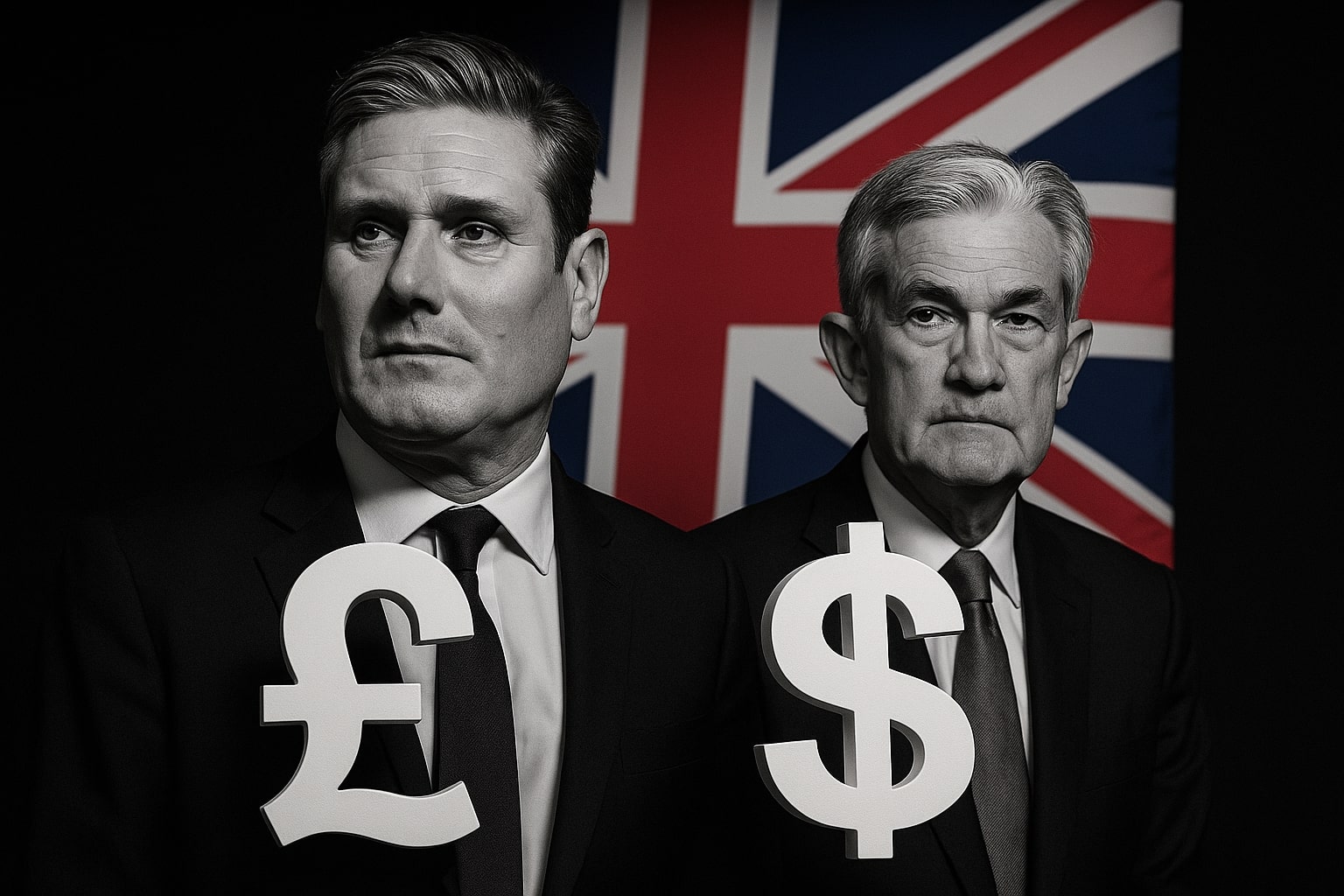
Gold Price Forecast - Gold Soars to $4,239 as Shutdown Resolution, Weak Dollar and Fed Cut Odds Ignite XAU/USD Rally
XAU/USD hits a three-week high as gold retests the $4,239 zone, boosted by a softer dollar, renewed safe-haven demand, and expectations of a December rate cut | That's TradingNEWS
XAU/USD Rockets Back to $4,239 as Five-Day Surge Rebuilds Momentum After the 43-Day U.S. Shutdown Ends
Gold re-established dominance across global markets as XAU/USD accelerated to $4,239.52, reclaiming levels not seen since October 21 and extending a 7% rally across five consecutive sessions. The metal stabilized around $4,229.59, erasing the entirety of last month’s correction and forcing traders to confront a sharply altered macro backdrop after President Trump signed the bill ending the record 43-day U.S. government shutdown. The reopening is not just a political shift—it immediately reshapes the rate path, the dollar’s direction, and the entire risk-hedging landscape that gold thrives on.
The shutdown triggered a historic data blackout: two months of labor prints, inflation releases, and PCE readings were frozen. With operations restarting, markets now brace for a flood of delayed indicators that will likely confirm a softer labor market and weaker demand. That expectation alone pushed the U.S. Dollar Index back to 96.54 (–0.31%), reinforcing the gold bid at the same moment traders priced in 63% odds of a December Fed cut, accelerating bullion’s march back toward its October all-time high of $4,382.
XAU/USD Breakout Fueled by Fed Pivot Odds as Traders Bet Weak Data Forces Another 25 bps Cut
Gold’s upside is now tightly linked to the Federal Reserve’s posture. Rate expectations have shifted dramatically: the probability of a 25-basis-point cut on December 9–10 surged after private surveys confirmed job-market deterioration. The reopening of the government—while positive—also means incoming data may confirm that the shutdown itself shaved as much as 2 percentage points off Q4 GDP, according to early White House projections.
The Fed already delivered one cut last month, but Jerome Powell’s warning that further easing “is not guaranteed due to lack of data” now looks outdated. With that data finally re-entering the system, the market is overwhelmingly betting on confirmation of weakness. Lower rates slash the opportunity cost of holding non-yielding assets, allowing XAU/USD to behave like a duration asset. The result: gold outperforms even as real yields flatten.
Momentum Builds as XAU/USD Reclaims the Upper Channel Between $3,900 Support and $4,382 ATH
Gold is behaving exactly as a structural bull asset should after a sharp correction. The price rebuilt from the $3,900 support zone, reinforced by the 50-day EMA in the $3,830–$3,900 band, a region that absorbed every wave of algorithmic selling during the recent drawdown. XAU/USD now trades comfortably back above the psychological $4,000 threshold, validating the metal’s resilience and strengthening the multi-month ascending structure.
The next resistance cluster sits at $4,250–$4,382, the final barrier before price discovery begins again. The path between $4,239 and the ATH is thinly defended—liquidity pockets there are shallow due to forced ETF de-risking in October’s volatility spike. If gold closes above $4,250 on momentum volume, algorithms will target the full retest of $4,382, opening the door to a new breakout phase consistent with major institutional forecasts.
Institutional Forecasts Align on 20%+ Upside as Goldman Sachs, JP Morgan, and Bank of America Target $5,000–$5,055
Institutional models remain aggressively bullish and far ahead of spot pricing. Goldman Sachs and JP Morgan both project $5,055 by Q4 2026, representing +19.5% upside from today’s $4,229 level. JP Morgan’s extended model, which factors sustained central-bank purchases averaging 566 tons per quarter in 2026, projects a longer-term ceiling at $6,000 by 2028.
Bank of America adjusted its 2026 target to $5,000, with an average case around $4,400, acknowledging short-term volatility but calling the structural bull market intact. Wells Fargo sits more cautiously at $4,500–$4,700, but even that implies +11.4% upside from current pricing.
Every major desk agrees on the same structural catalysts:
– persistent central bank accumulation (with 2025 purchases surpassing 200 tons YTD)
– Western ETF inflows after October’s $8.2B surge
– weaker dollar as U.S. tariff policies shift
– Fed entering the deepest rate-cut cycle since 2020
The consensus is rare—and when gold sees this kind of alignment, the metal typically moves ahead of schedule.
WGC Warns 2026 Will Depend on U.S. Tariff Policy and Fed Cuts as Global Demand Diversifies Beyond China and India
While WGC stopped short of issuing a formal 2026 price target, Shaokai Fan of the World Gold Council underscored two macro swing factors: trade tariffs and Federal Reserve policy. If the U.S. resolves tariff clashes with major partners, risk premiums embedded into gold’s safe-haven demand may partially unwind—but only temporarily, given the structural level of U.S. debt monetization and currency debasement concerns.
The WGC also highlighted the democratization of gold demand across Southeast Asia and Indonesia, where 67% of households own some form of gold investment, shifting flows away from traditional giants like India and China. These emerging markets have become price setters rather than spectators during gold’s 2025 rally.
Read More
-
CoreWeave Stock Price Forecast - CRWV Shares Falls to $79.30 as Delays, Debt and AI Volatility Collide With Explosive $55.6B Backlog
13.11.2025 · TradingNEWS ArchiveStocks
-
XRP Price Forecast - XRP-USD Steadies Above $2.30 as ETF Debut Triggers a High-Stakes Pivot
13.11.2025 · TradingNEWS ArchiveCrypto
-
Oil Price Forecast - Oil Prices Slide as WTI Holds $58.46, Brent Ticks to $63.15 and Azeri Light Drops Sharply
13.11.2025 · TradingNEWS ArchiveCommodities
-
Stock Market Today - Nasdaq 22,959 Crashes as Tech Unravels— DIS Stock –8.8% & NVDA Stock –4% Hit Markets Hard
13.11.2025 · TradingNEWS ArchiveMarkets
-
GBP/USD Price Forecast - Pound Climbs Toward 1.3200 as Dollar Weakens and UK Data Sparks Major Repricing
13.11.2025 · TradingNEWS ArchiveForex
Three-Week High Confirmed as Reuters Data Shows XAU/USD at $4,206.64 While Futures Hold $4,211.50
Additional momentum came from Thursday’s intraday spot high at $4,206.64, marking a three-week peak. Futures maintained the move, settling at $4,211.50, confirming institutional buyers are still active rather than taking profit into strength.
Silver initially attempted to track gold, tagging $52.83 before slipping 1.1% as traders took gains ahead of the $53–$54 resistance. Platinum and palladium weakened, falling to $1,585.10 and $1,456.50, reinforcing the fact that this is a gold-specific capital rotation, not a broad precious-metals rally.
Macro Backdrop Turns Gold-Friendly as USD Weakens, Real Yields Break Correlation, and Shutdown Fallout Fuels Caution
Standard Chartered flagged a notable decoupling: gold’s correlation with real yields and the dollar weakened sharply over the past two weeks. This indicates the metal is transitioning from a short-term macro hedge to a structural inflation and debt-hedge asset—precisely the environment where multi-week rallies become multi-month trends.
A weaker USD helped, but more importantly, the reopening of the government means investors will finally see the economic damage from six weeks of forced data blindness. Expectations are firmly anchored to soft prints, supporting the safe-haven premium embedded in XAU/USD.
Meanwhile global capital prefers certainty: with tariffs, inflation, and policy fragmentation weighing on sentiment, gold’s role as the market’s cleanest collateral asset intensifies.
Central Bank and ETF Behavior Confirms Gold’s 2025 Strength as Southeast Asia Drives Demand and U.S. Funds Recover From October Losses
Gold ETFs saw five consecutive months of inflows through October despite a 5% pullback, with North American funds alone absorbing $6.5 billion. Central banks accumulated aggressively: September purchases hit 39 tons, with Poland at 67 tons and Kazakhstan at 40 tons, pushing year-to-date sovereign accumulation past 200 tons.
ETF holdings dipped only briefly during the October liquidation event driven by treasury volatility. The rebound confirms institutions see that correction as mechanical rather than fundamental.
The key difference between 2024 and 2025: physical demand now comes from multiple regions simultaneously—Southeast Asia, Turkey, MENA markets, and Latin America—reducing China-India dominance and stabilizing global flows.



















